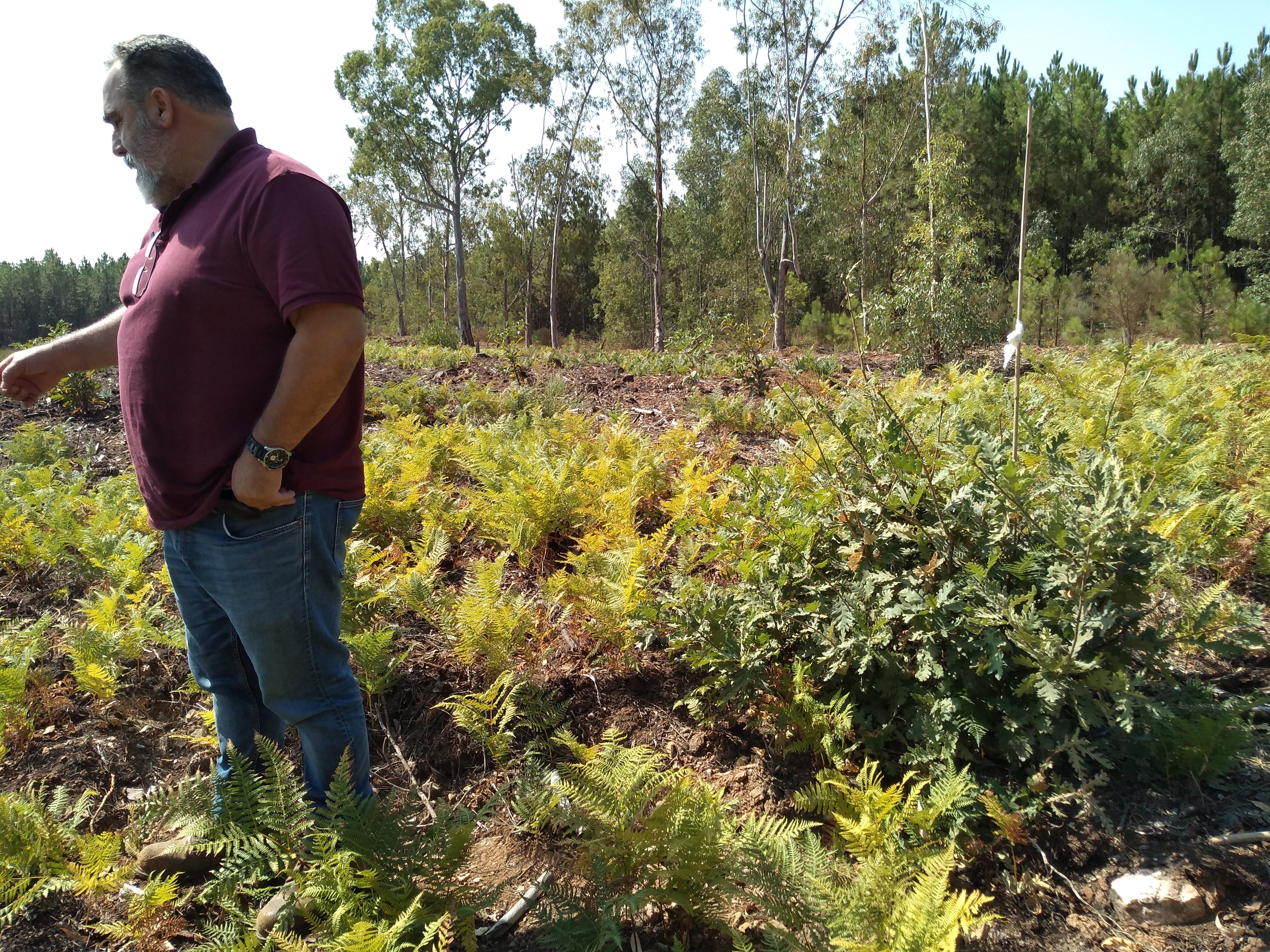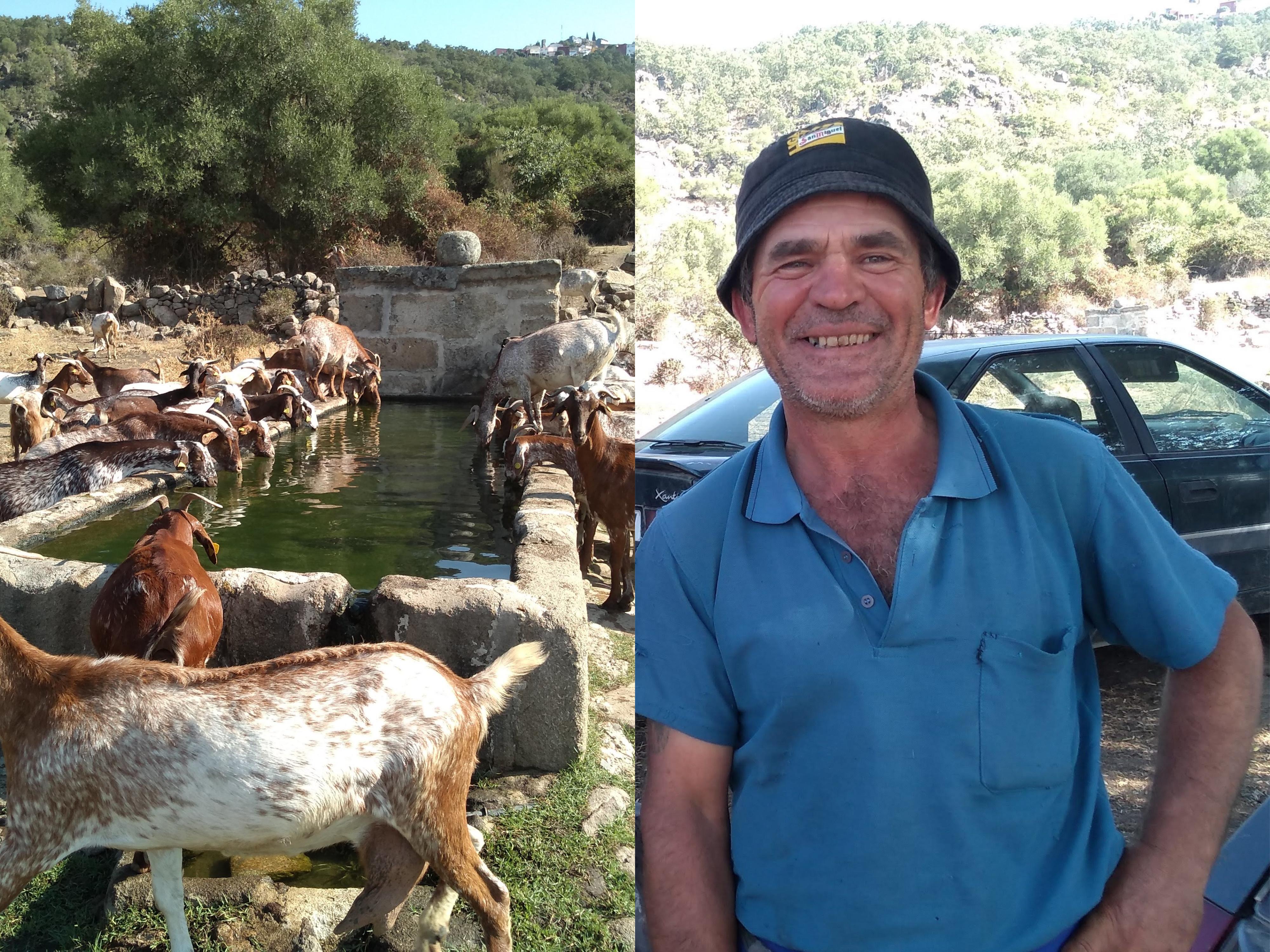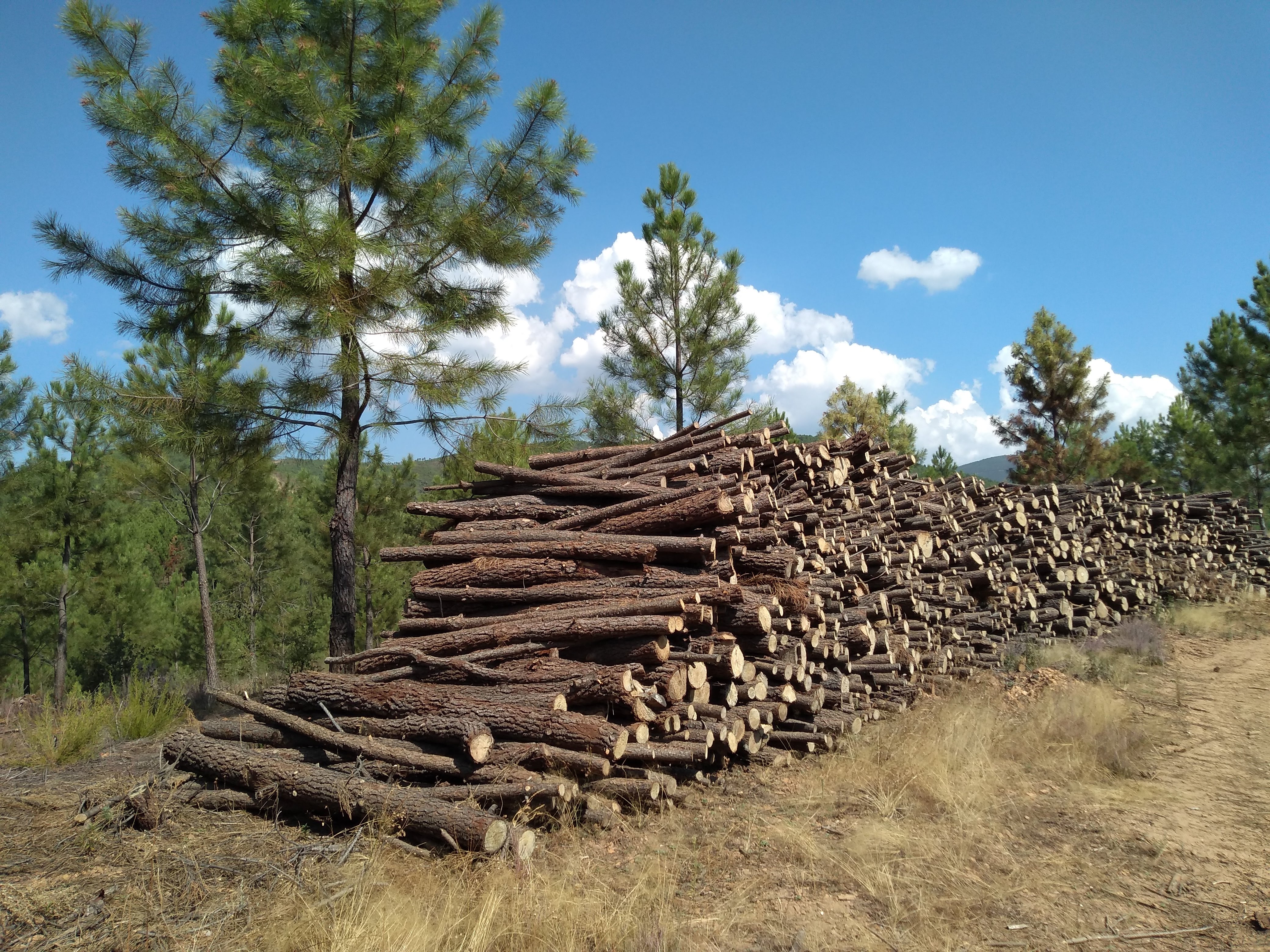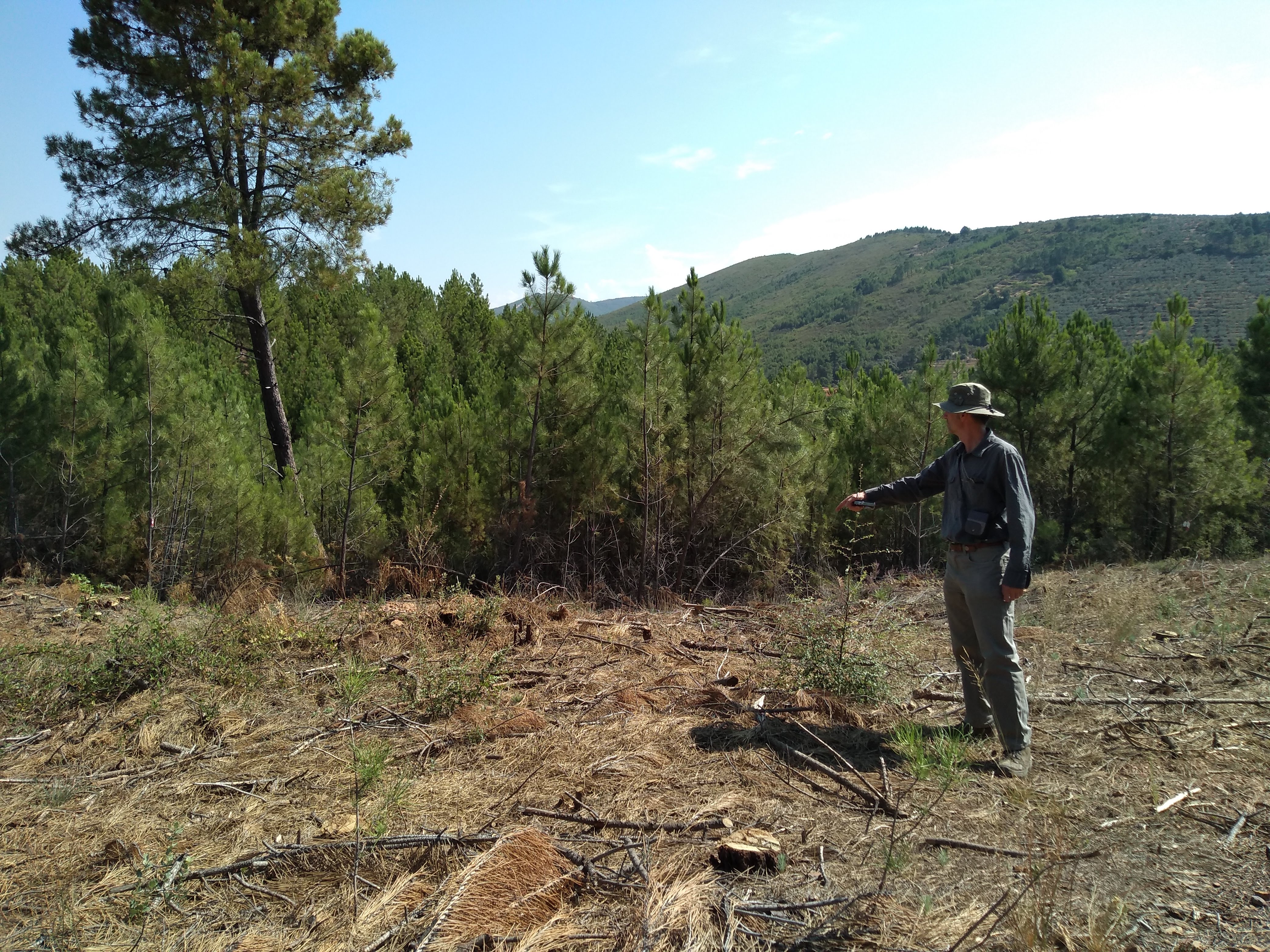by Jo Smith (Organic Research Centre)
Leaving behind the driest summer in the UK for 40 years, in August I travelled to Extremadura, western Spain, to gain a better understanding of the dehesa and surrounding landscape. Hosted by Gonzalo Palomo and Gerardo Moreno at the University of Extremadura, I spent a couple of days with the INDEHESA team involved in the MOSAICO project, headed by Fernando Pulido, visiting the beautiful Sierra de Gata and Las Herdes where this project on reducing megafires is focused.
The Sierra de Gata is a hotspot for megafires, wildfires that are over 500ha and often over 5000ha in scale. These occur mostly where the traditional agriculture that led to a mosaic of land uses and habitats has been abandoned for decades; for example in the Sierra de Gata the human population now is the same as it was 100 years ago. Forest plantation management has been neglected, especially after fires, resulting in the accumulation of dangerous levels of biomass. With most of government funding concentrated on fire extinction (i.e. new helicopters), it is essential to find alternative ways to reduce fire risk by promoting better land management, in cooperation with the local population. This is what the MOSAICO project is aiming to do……by developing productive fire breaks through agroforestry and other land uses to re-establish a mosaic landscape. For example, in 2009 a wildfire in Las Hurdes was stopped in its tracks when it came to an olive orchard with the widely spaced trees acting as a fire break and saving the fire from spreading towards a nearby petrol station.
In addition to the main benefit of fire reduction, this approach is hoped to generate other benefits in these marginal areas of the countryside, such as attract new inhabitants, new investment and economic diversification, thus maintaining or increasing the population and reducing land abandonment.

So how is this achieved? In MOSAICO, the project team are asking local people and municipalities to come forward with ideas and initiatives, small or large, which will generate productive firebreaks, understood as portions of the land area with cultivation, grazing or extraction of forest products. The team then provide advice and support, and work with the entrepreneurs to get the initiatives underway. Over the two years it has been running, there has been an average of eight initiatives per month being proposed, with 165 initiatives in total, now covering a total of 22,000ha which is ten times the area covered by traditional fire breaks. Large scale projects include the development by local municipalities of peri-urban plans for fire prevention. For example, in Descargamaria there has been removal of biomass in radius of 500m around village to reduce fire risk. The municipality also provided support to attract a goat-herder to bring his flock to this cleared area in order to provide a long term solution against tree re-growth.
At a medium scale, Luis Mariano, the Mayor of Villabuenas de Gata has been an inspiration for many, with his enthusiasm and entrepreneurship attracting new inhabitants to his town. He has implemented an agroforestry approach to his forested area, by thinning out the pines, and allowing naturally regenerating holm oaks to get established. To prevent re-growth of the pines, sheep will graze the area once tree guards have been installed to protect the holm oak.
At the small-scale, five goat farmers have formed a cooperative group to convert their production to organic milk and meat. Organic milk is two to three times higher than the conventional farm gate price, but organic feed is double the price and difficult to source, so the MOSAICO team have been working with them to secure markets for their organic produce as well as offer advice and support during the conversion process. We visited Foro, who with his wife and two sons, manages a herd of 250 goats, with all year milking, grazing/browsing the area surrounding the “dehesa boyal”, the common land. Several of these goat farmers were previously construction workers, who have returned to their villages following the crisis, seeing a new opportunity in goat farming. Similarly, there has been a revival in resin collection, which also helps to keep the forest understorey clear. As the Spanish economy improves, however, there are concerns about the long-term stability of these enterprises, especially resin tapping which is low paid and seasonal.

There are still several barriers that the MOSAICO team and local inhabitants have to contend with – land ownership is an issue, with many landowners living outside the area and carrying out no management of forest regrowth after fires. Also, there are restrictions and regulations governing forest management options; for example forest trees can only be replaced by forest trees, so a landowner cannot replace pines with cherries or olives (but can plant chestnuts). Another limitation is access to processing facilities for potential products from the new initiatives. The MOSAICO team are looking at ways to address these barriers, working together with the locals as well as local and regional governing bodies.
A final visit was made to the beautiful village of El Gasco, tucked away at the end of a valley. This valley had escaped from the pine plantations that dominate other areas of the region, and the hillsides are covered with terraces of vegetables and tree crops – homegardens – managed by the villages. Definitely worth a visit if you are in the area…
I’d like to say a warm thank you to Gonzalo Palomo and Gerardo Moreno for hosting me during my time in Extremadura, and to Fernando Pulido and Manuel Bertomeu for allowing me to gate-crash their visit to Sierra de Gata, and providing such a wealth of knowledge about the landscape and people.













